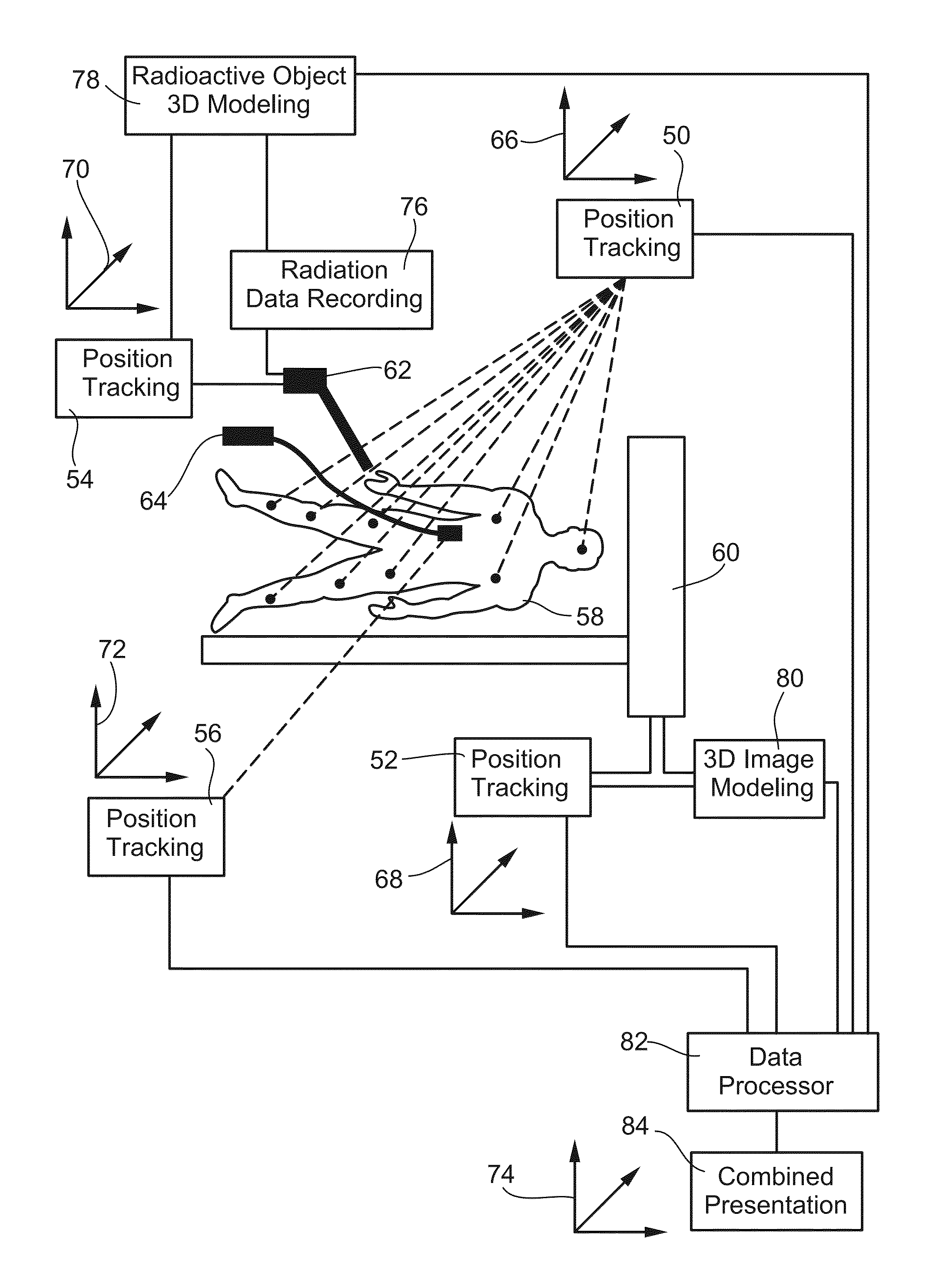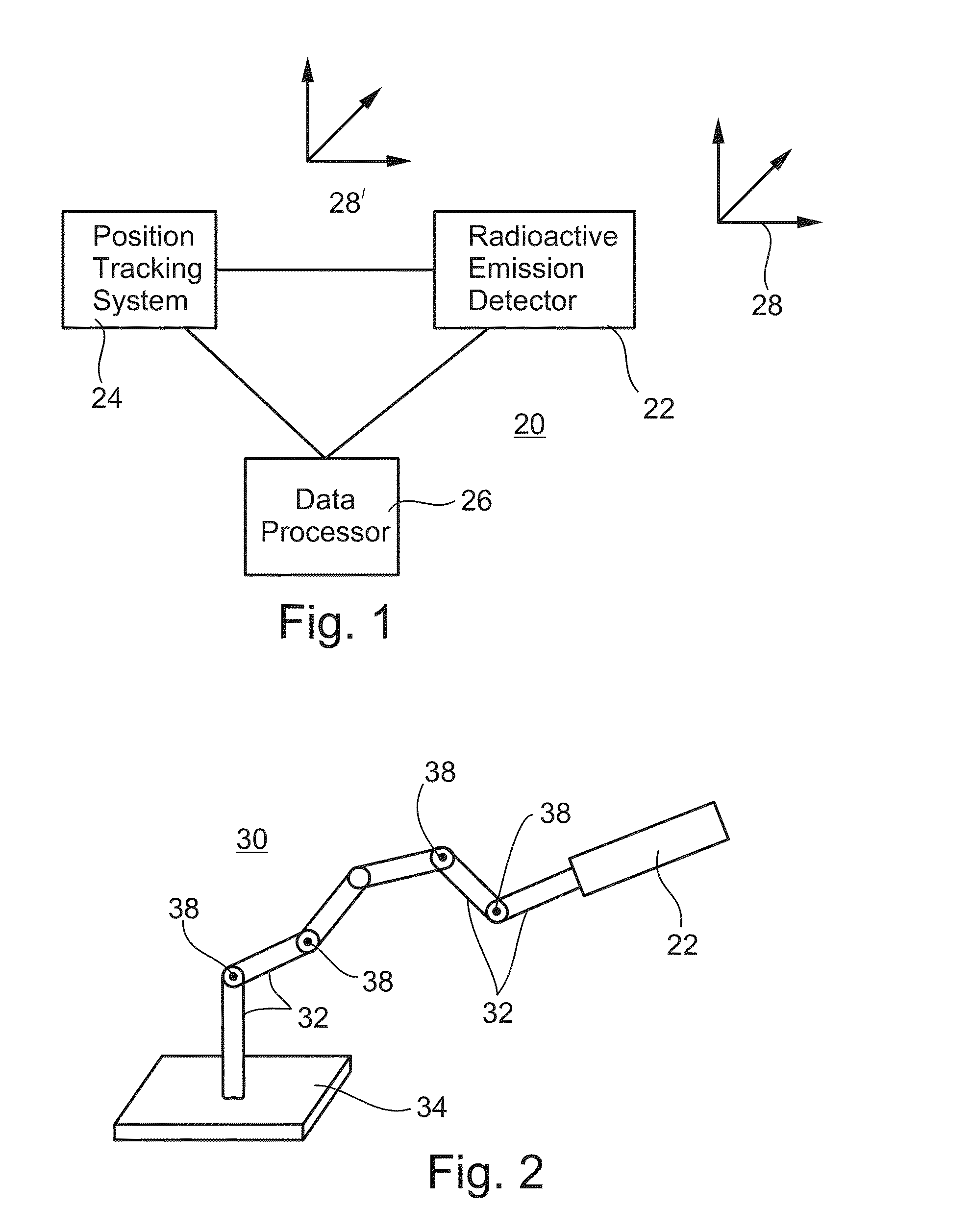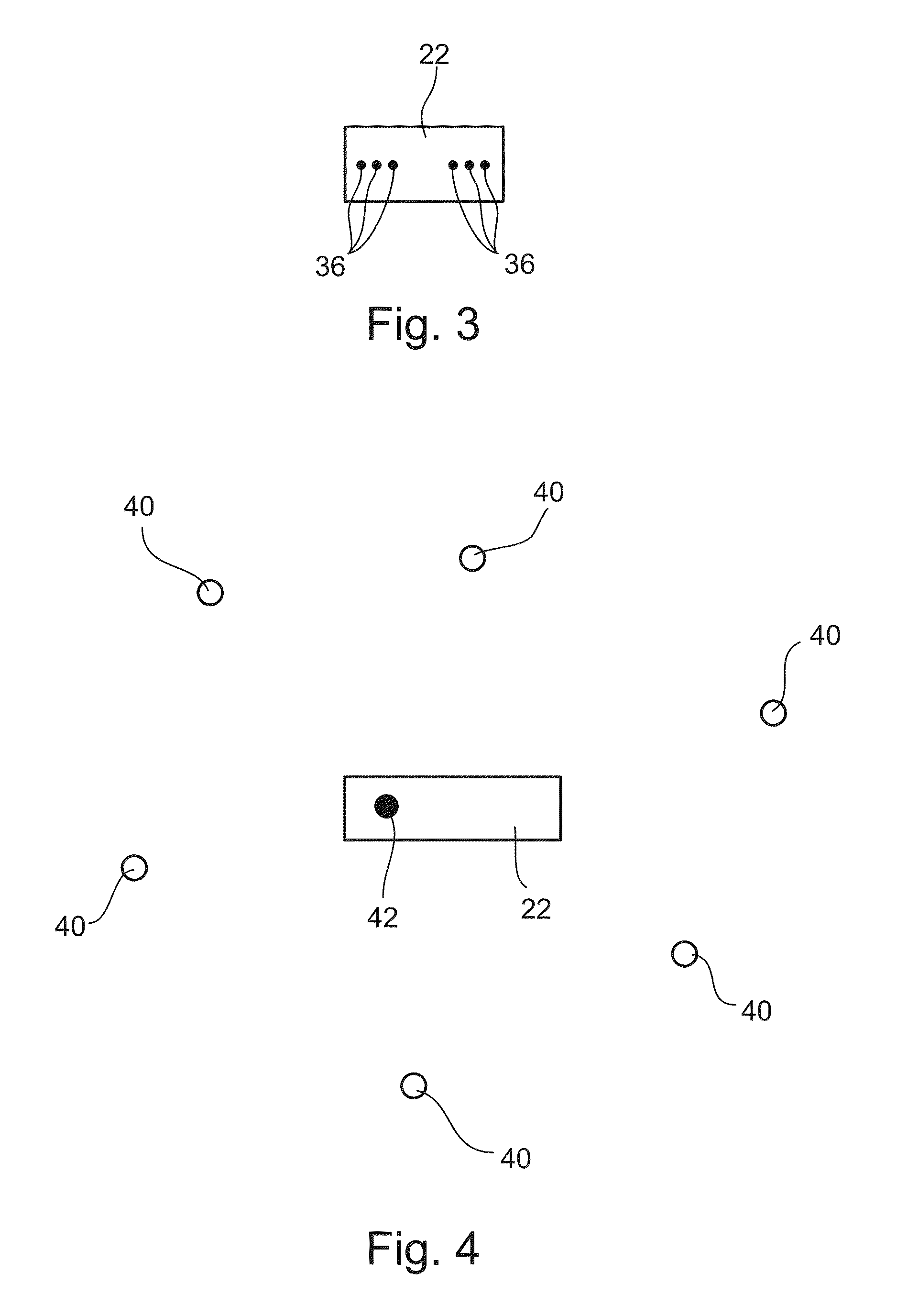Radioactive emission detector equipped with a position tracking system
a technology of position tracking and radioactive emission, which is applied in the direction of sensors, radiotherapy, diagnostics, etc., can solve the problems of affecting the methods and outcomes of minimally invasive surgical procedures, affecting the safety of patients, and causing tremendous blunt trauma and blood loss
- Summary
- Abstract
- Description
- Claims
- Application Information
AI Technical Summary
Benefits of technology
Problems solved by technology
Method used
Image
Examples
Embodiment Construction
[0076]The present invention relates to a radioactive emission probe in communication with a position tracking system and the use thereof in a variety of systems and methods of medical imaging and procedures. Specifically, wide-aperture collimation-deconvolution algorithms are provided, for obtaining a high-efficiency, high resolution image of a radioactivity emitting source, by scanning the radioactivity emitting source with a probe of a wide-aperture collimator, and at the same time, monitoring the position of the radioactive emission probe, at very fine time intervals, to obtain the equivalence of fine-aperture collimation. The blurring effect of the wide aperture is then corrected mathematically. Furthermore, an imaging method by depth calculations is provided, based on the attenuation of photons of different energies, which are emitted from the same source, coupled with position monitoring.
[0077]The principles and operation of the present invention may be better understood with ...
PUM
 Login to View More
Login to View More Abstract
Description
Claims
Application Information
 Login to View More
Login to View More - R&D
- Intellectual Property
- Life Sciences
- Materials
- Tech Scout
- Unparalleled Data Quality
- Higher Quality Content
- 60% Fewer Hallucinations
Browse by: Latest US Patents, China's latest patents, Technical Efficacy Thesaurus, Application Domain, Technology Topic, Popular Technical Reports.
© 2025 PatSnap. All rights reserved.Legal|Privacy policy|Modern Slavery Act Transparency Statement|Sitemap|About US| Contact US: help@patsnap.com



